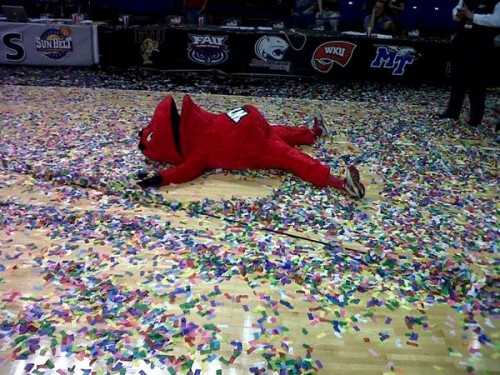NCAA Game Analysis: First Four – Tuesday Night
Posted by KDoyle on March 13th, 2012No matter whether you feel the First Round of the NCAA Tournament is legitimate or not (and we know at least one person writing Amicus briefs to the Supreme Court on this very issue), it all gets under way at 6:40 PM tonight. From 68 to 16 in the next six days… let’s analyze the first two games this evening.
#16 Western Kentucky vs. #16 Mississippi Valley State — South Region First Round (at Dayton, OH) — 6:40 pm ET on truTV.
It is hard to believe that the NCAA Tournament officially tips off tonight — it seems like the 24 hours of college basketball marathon on ESPN was just last week — as Western Kentucky will do battle against Mississippi Valley State in the First Round. Things looked bleak for both squads midway through the year as MVSU entered conference play with a 1-11 record, while Western Kentucky stood at 5-14 just six games into league play. In fairness to the Delta Devils, however, they did play one of the most difficult non-conference schedules in the nation with virtually all of their contests being so-called “guarantee games.” As for the Hilltoppers, they fired Ken McDonald halfway through the season, and have looked like an entirely different team since. Mississippi Valley is 20-1 since SWAC play began, while Western Kentucky is 10-7 since Ray Harper took over the helm in Bowling Green. Hailing from the weakest conference in America, the Delta Devils will enter the game as slight underdogs, even though they have a much more impressive overall record than their opponent. Western Kentucky is led by freshman Derrick Gordon (11.8 PPG, 6.7 RPG), but junior transfer Teeng Akol — formerly of Oklahoma State — has provided the Hilltoppers with a formidable presence in the frontcourt as of late; Akol scored a career high 23 points in the Sun Belt championship game. Meanwhile for MVSU, it has a balanced approach as five players on the squad average nine points or better. Terrence Joyner is their sharpshooter as he connects on just over two triples a game, while Paul Crosby (13.3 PPG, 7.4 RBG) mans the paint. Despite Sean Woods‘ team losing only one game since the New Year, Western Kentucky is the more talented team and is playing with a real chip on its shoulder.
The RTC Certified Pick: Western Kentucky
#14 BYU vs. #14 Iona — West Region First Round (at Dayton, OH) — 9:10 pm ET on truTV. Read the rest of this entry »












































